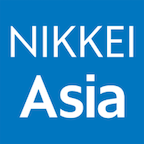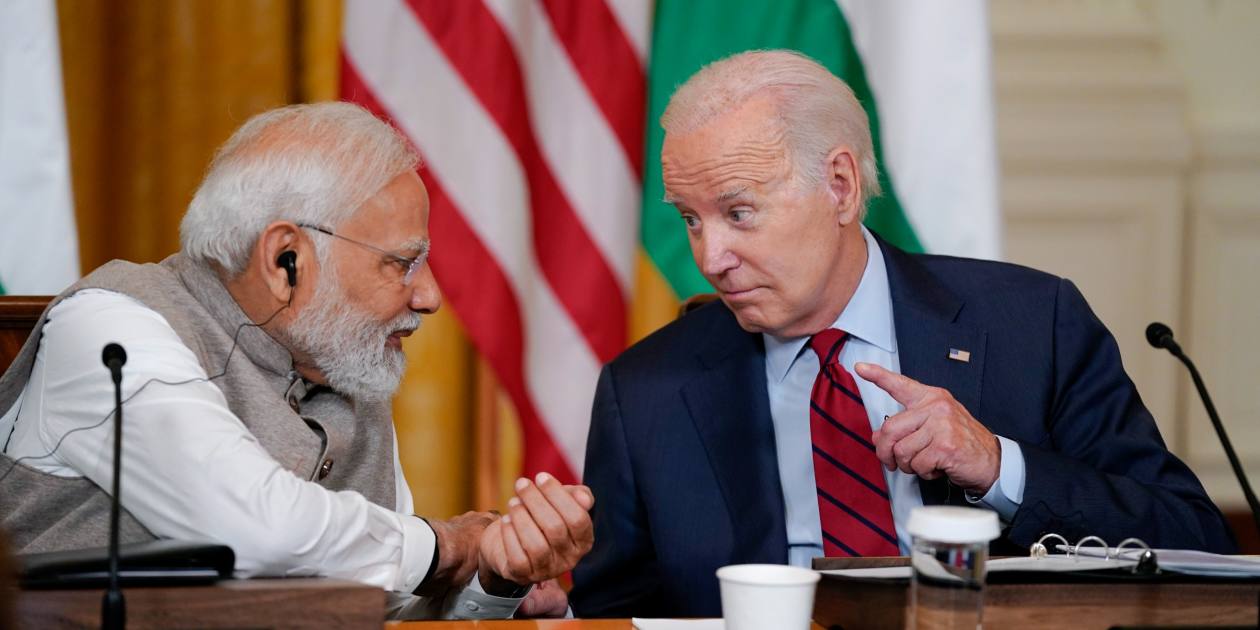Resupply and repair partnership to help fill 'big gap' in Indo-Pacific readiness
View attachment 938067
Indian Prime Minister Narendra Modi, left, with U.S. President Joe Biden at the White House on June 23. © AP\\
WASHINGTON/NEW DELHI -- The U.S. seeks to transform India into a center for resupplying and maintenance of naval vessels in the South Asia region, where it has been stretched thin with such capabilities.
U.S. President Joe Biden and Indian Prime Minister Narendra Modi agreed to comprehensive defense and economic partnerships when Modi visited the White House in late June for a summit with Biden.
"The U.S.-India Major Defense Partnership has emerged as a pillar of global peace and security," the joint statement from the summit reads.
The U.S. will provide India with support to develop infrastructure that will be used to resupply, repair and maintain ships and aircraft.
"We'll have much more to follow in the near future, but the aim here is to make India a logistics hub for the United States and other partners in the Indo-Pacific region," said Air Force Brig. Gen. Pat Ryder, the Pentagon press secretary, to reporters in late June.
As part of this effort, the U.S. Navy will sign ship repair agreements with Indian shipyards.
The navy has concluded a Master Ship Repair Agreement with the Larsen & Toubro shipyard near the Indian city of Chennai, according to the White House. The navy is close to finalizing separate deals with two other shipbuilders, based in Mumbai and Goa.
The U.S. military looks to build readiness for quickly handling resupply activities and repairs in the Indo-Pacific region. If the navy has access to more hubs in the region, then vessels and aircraft will waste less time pausing operations for both. The time savings can be allocated to joint exercises with other countries.
"There's a big gap between the bases the United States sustains in the bilateral hub agreements they have in the Middle East and then the Western Pacific," said Jeffrey Payne, assistant professor at the Near East South Asia Center for Strategic Studies. "So, India fulfills this."
At present, Japan and Singapore serve as key naval hubs for the U.S. in Asia.
Harry Harris, former commander of U.S. Indo-Pacific Command, hailed the initiative.
"Currently, we operate from Diego Garcia and Western Australia in the Indian Ocean," he told Nikkei via email. "Securing a maintenance, repair, and logistics hub on the Subcontinent is significant as this would give us much-needed flexibility in the vast Indian Ocean region."
The Chinese navy has about 355 ships and submarines, making it the world's largest numerically, according to the 2021 edition of the Pentagon's annual report on China. If American vessels cannot spend more time at sea, then the U.S. will risk falling behind China in terms of naval capabilities, weakening deterrence.
Because the Indo-Pacific is defined by large stretches of water, many believe that conducting supply activities in the region during emergencies will prove more difficult than similar activities in Europe, with its land routes.
"Are we ready today? Yes, we are," Rear Adm. Mark Melson, commander of the U.S. Navy's logistics group stationed in Singapore, told Nikkei in an interview in early June. "But I will never claim to be ready enough."
"We are certainly trying to improve the amount of access into a number of places where we can conduct expeditionary resupply, expeditionary refuel [and] if required, expeditionary rearm," Melson said.
The Biden administration plans to deepen the partnership with India beyond the Indian Ocean in the maritime space. Daniel Kritenbrink, assistant secretary of state for East Asian and Pacific affairs, attended an event hosted by a U.S. think tank at the end of June and touched on strengthening the collaboration with India in the South China Sea.
Indian External Affairs Minister Subrahmanyam Jaishankar met with Philippine Foreign Secretary Enrique Manalo in New Delhi at the end of June. The two ministers released a joint statement that backed a 2016 arbitration ruling at The Hague rejecting Chinese claims to nearly all of the South China Sea.
This marked the first time that India expressed support for the Hague ruling, which is based on the United Nations Convention on the Law of the Sea, according to Gregory Poling, a senior fellow at the Center for Strategic and International Studies in Washington. It put India in line with Japan and major Western countries on the issue.
India, as a representative of the so-called Global South emerging and developing countries, is gaining a stronger role and voice in the international community.
On the security front, India appears to have shifted focus on relations to the West. Modi's visit to Washington in June is evidence of this. India on Tuesday hosted the Shanghai Cooperation Organization summit, which was held in a virtual format out of consideration for the U.S.
But the basic theme of India's diplomacy remains "strategic autonomy," which entails working with other countries according to its own interests.
In recent years, the U.S. apparently threatened to impose sanctions on India when it sought to acquire air defense systems from Russia. In 1971, the U.S. sent an aircraft carrier to threaten India during the third Indo-Pakistani War. Whether today's partnership between the U.S. and India will completely dispel the latent distrust of Washington remains to be seen.
Resupply and repair partnership to help fill 'big gap' in Indo-Pacific readiness

asia.nikkei.com








